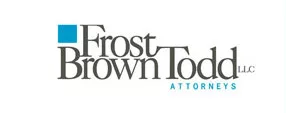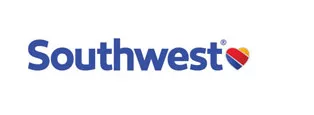 By Lisa Horn, Director, Congressional Affairs, Society for Human Resource Management (SHRM)
By Lisa Horn, Director, Congressional Affairs, Society for Human Resource Management (SHRM)
The 21st century workplace requires workplace policies and practices that are responsive to employee needs and enable them to be have more control over how they accomplish their work and responsibilities. That’s why top employers are making effective and flexible work—or workflex—a fundamental part of their strategy to attract and retain the best talent.
Workflex is not a reward or perk, it’s a business strategy that research demonstrates produces positive results for employers and employees alike. At its core, workflex is a partnership between employers and employees that defines how, when and where work gets done in ways that work for all. Employees benefit from more supportive workplaces that are less likely to negatively affect their personal and family lives, while employers benefit from having employees with higher engagement, job satisfaction and a desire to stay.
What do top employees want? Telework, more control over schedules, robust leave policies and to be evaluated based on results, not face-time—to name a few. Smart employers are listening and responding. For this reason, workflex is gaining increased intention as a key recruitment and retention tool.
Hardly a day goes by without progressive employers upping the ante to provide more workplace flexibility and making headline news because of it. Netflix, Amazon, Microsoft, Johnson & Johnson and Ernst & Young are just a few of the noteworthy employers making waves with increased workflex and generous leave policies. However, it’s not just the large companies that are embracing paid leave and flexibility—many small- and mid-sized organizations are following their lead.
Overall, according to the 2016 National Study of Employers, 99 percent of employers with 50 or more employees in the U.S. have some form of paid-leave option (sick, vacation, paid time off) for some portion of their full-time employees. Additionally, 58 percent offer paid maternity leave and 15 percent offer paid paternity leave. And 66 percent of employers now provide occasional telework, up from 34 percent in 2005.
Given the fact that 78 percent of employers report difficulty recruiting employees for highly skilled jobs and 38 percent report difficulty recruiting for entry-level, hourly jobs, increasing workflex offerings is an opportunity for employers to distinguish themselves as employers of choice to help them win the war for talent.
So if workflex is a win-win for both employers and employees, is there a role for public policy to ensure workflex is the norm for all? The answer is yes—but to date, policymakers have not agreed on a solution that works for both employers and employees in today’s modern workplace.
Even though most employers are already offering some form of paid leave and flexible work options, federal, state and local policymakers continue to pursue mandated approaches to these benefits. Several proposals would expand the Family and Medical Leave Act to require family and medical leave to be paid. Lawmakers also continue to pursue various forms of mandated paid sick leave. Other policy initiatives include requiring employers to establish predictable work schedules or guaranteeing an employee’s right to request a flexible work schedule. With different levels of government approaching this issue in different ways, employers now have to navigate a fragmented system of state and local paid leave mandates and requirements, causing numerous challenges, especially for multistate employers.
Rigid, one-size-fits-all government mandates hinder employer flexibility in designing workflex programs. A hodgepodge of state and local mandates governing paid leave and workflex options has created complex compliance challenges that prevent employers from creating innovative programs tailored to the unique needs of an organization’s workforce and business model.
Recognizing these challenges, SHRM has called for a new dialogue on this important issue because we believe that the United States must have a 21st century workplace flexibility policy that meets the needs of both employers and employees. Working with a diverse group of SHRM members, including NAWBO National, we developed a policy proposal to address the obstacles employers face in designing programs to assist employees in meeting the dual demands of work and personal needs, without relying on a counter-productive one-size-fits-all government mandate.
In a nutshell, this proposal would expand paid leave and workplace flexibility opportunities for all employees, and would provide employers with flexibility and predictability to promote innovative workflex programs. Employers that choose to opt in to the proposal by offering a minimum threshold of paid leave and a flexible work option to all employees will automatically satisfy all state and local requirements. By amending the Employee Retirement Income Security Act (ERISA), participating employers would be afforded flexibility and certainty in designing workplace flexibility and paid leave offerings, rather than facing compliance challenges with a patchwork of conflicting requirements.
SHRM is optimistic that this proposal will be introduced soon in the 115th Congress and will garner significant interest among policymakers and other stakeholders. It is a fresh policy solution that gives employers flexibility to implement paid leave and expanded workflex options to give employees more choices for how, when and where work is done. After all, “work’” is more flexible than ever. Shouldn’t workplace rules be flexible too?
        |

